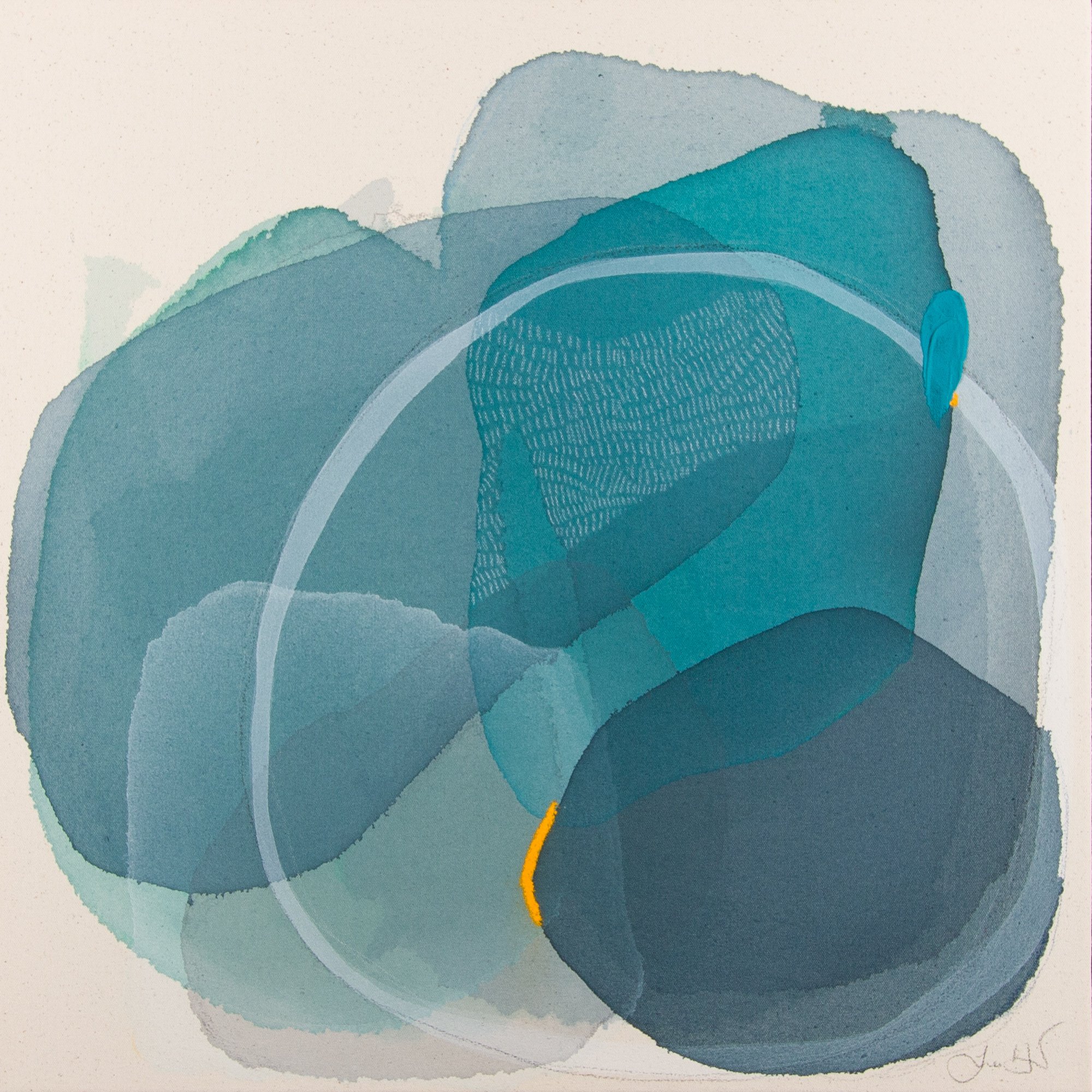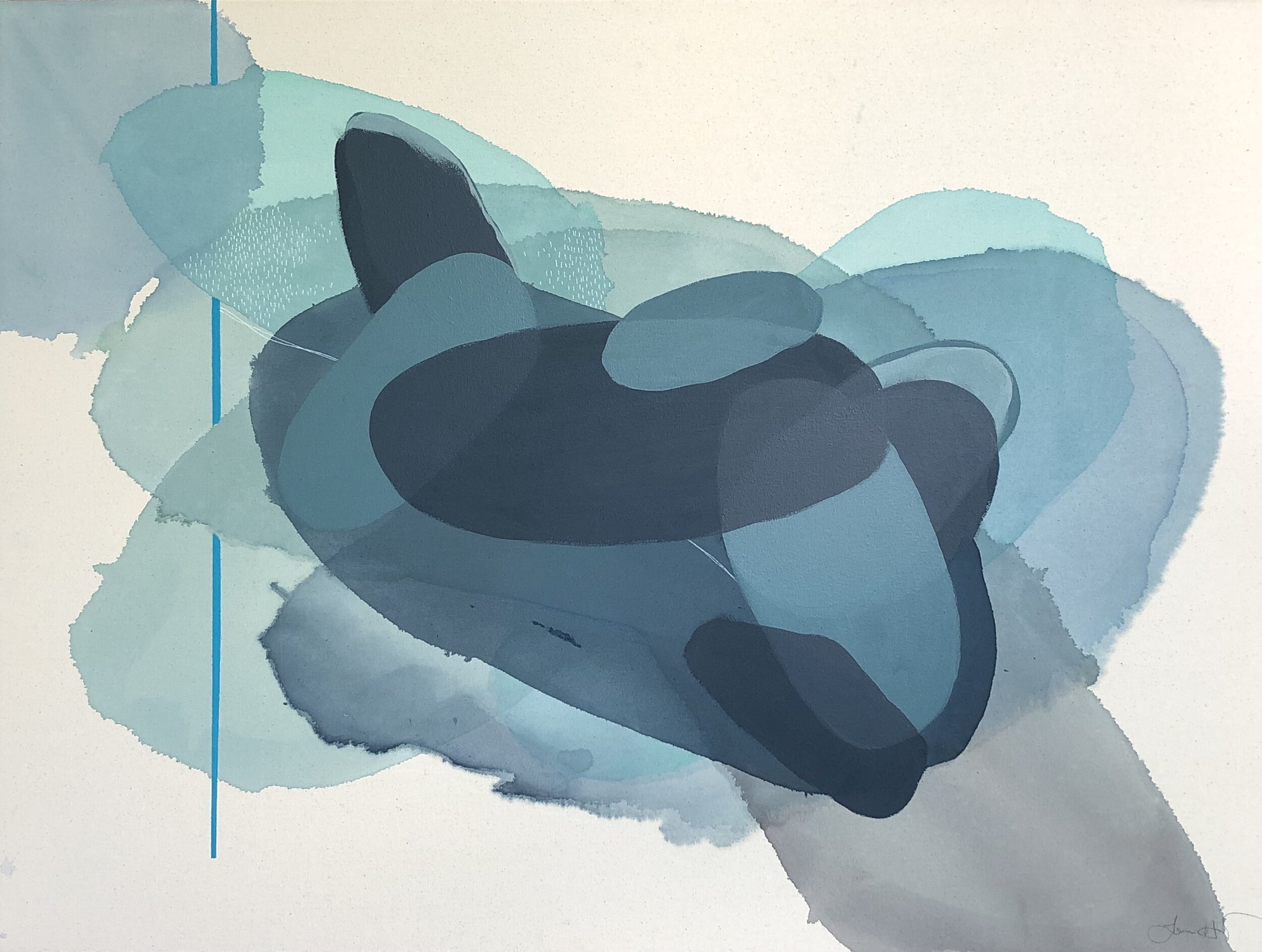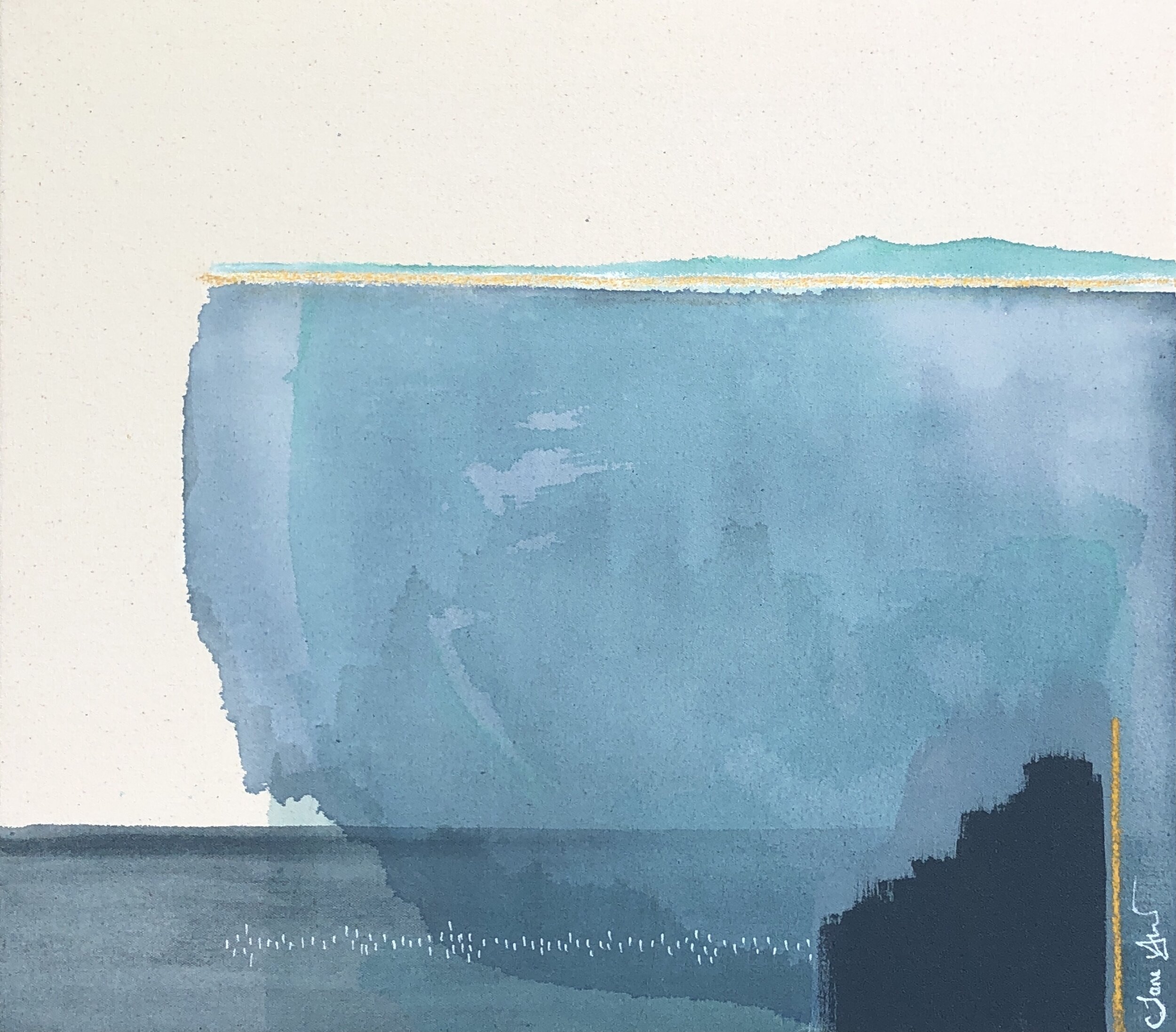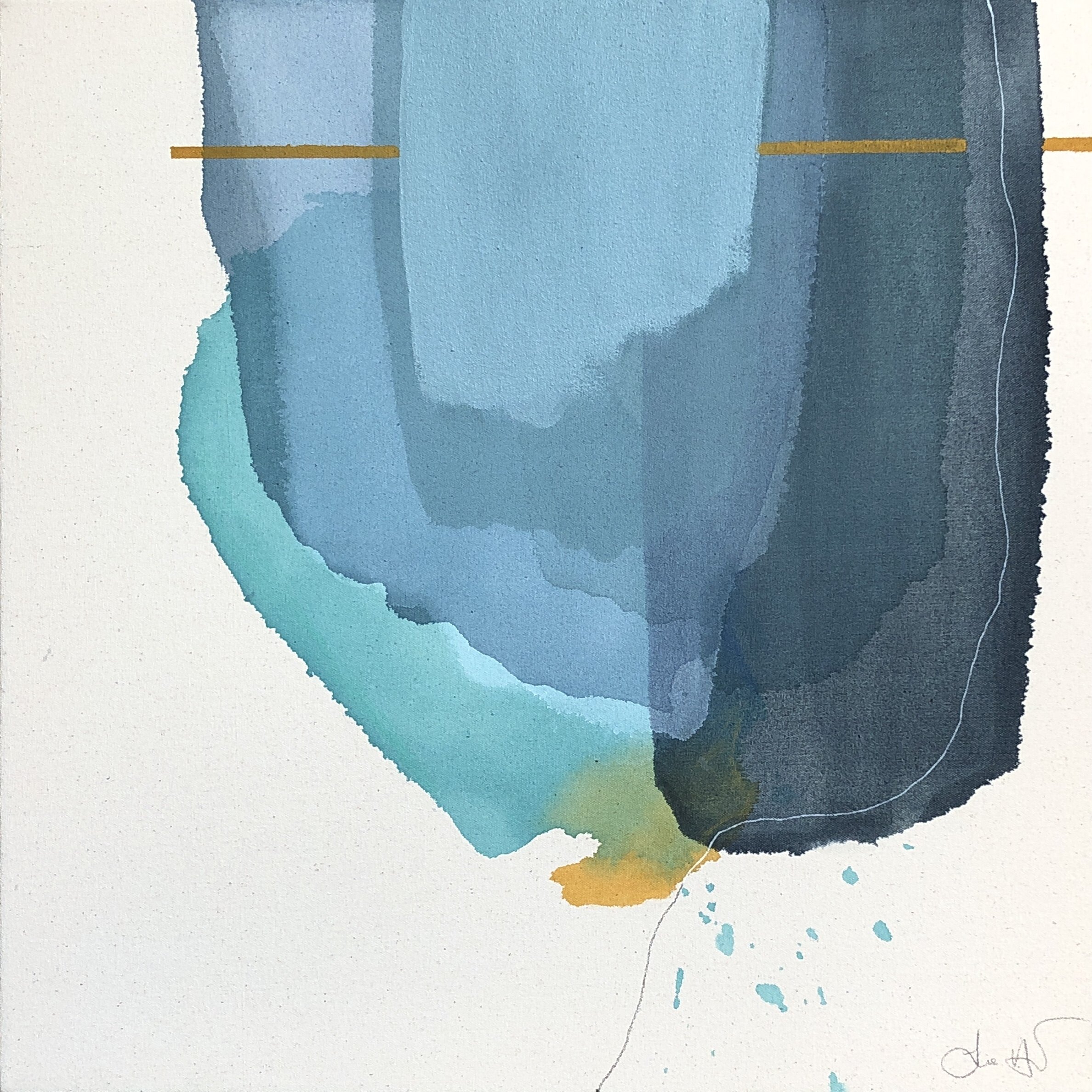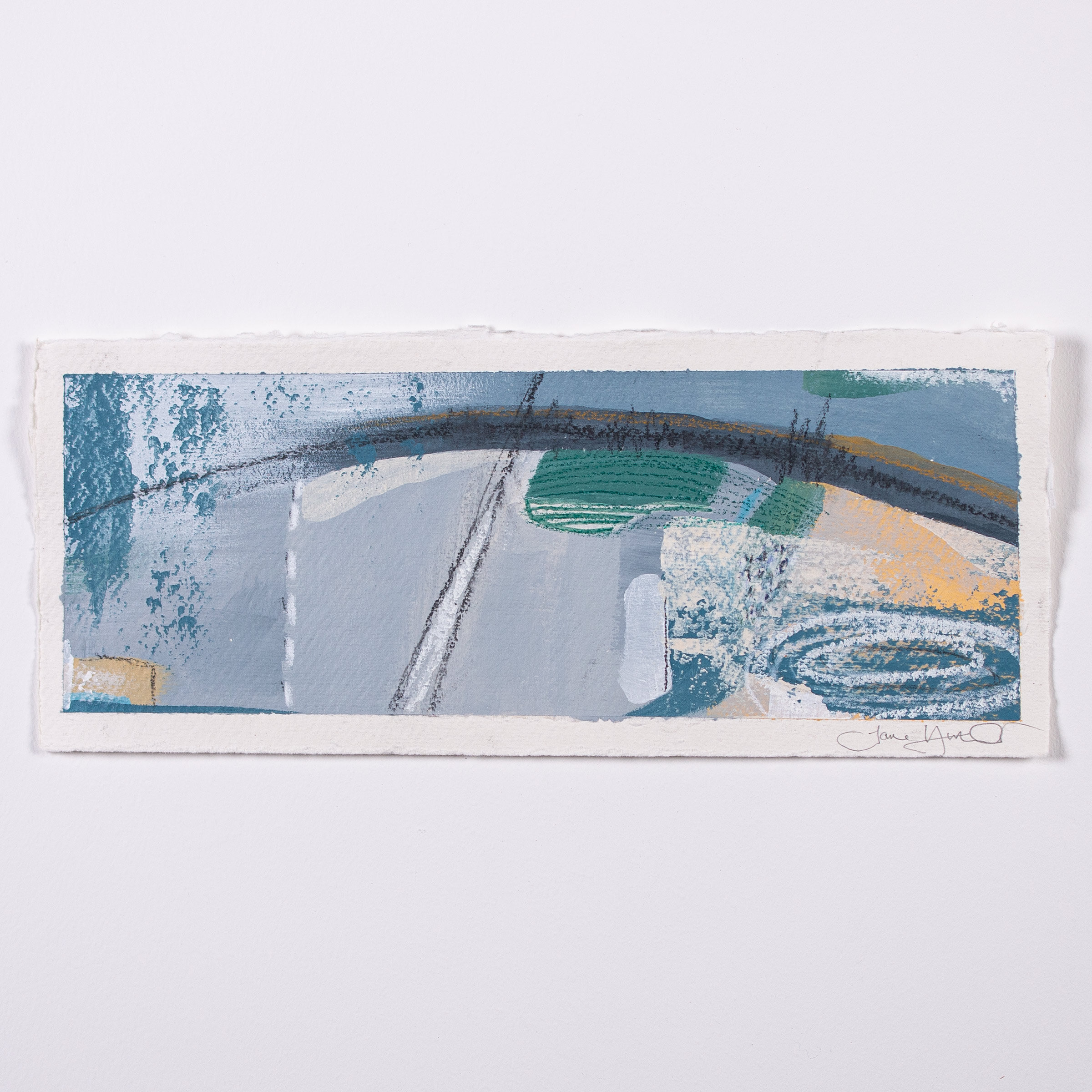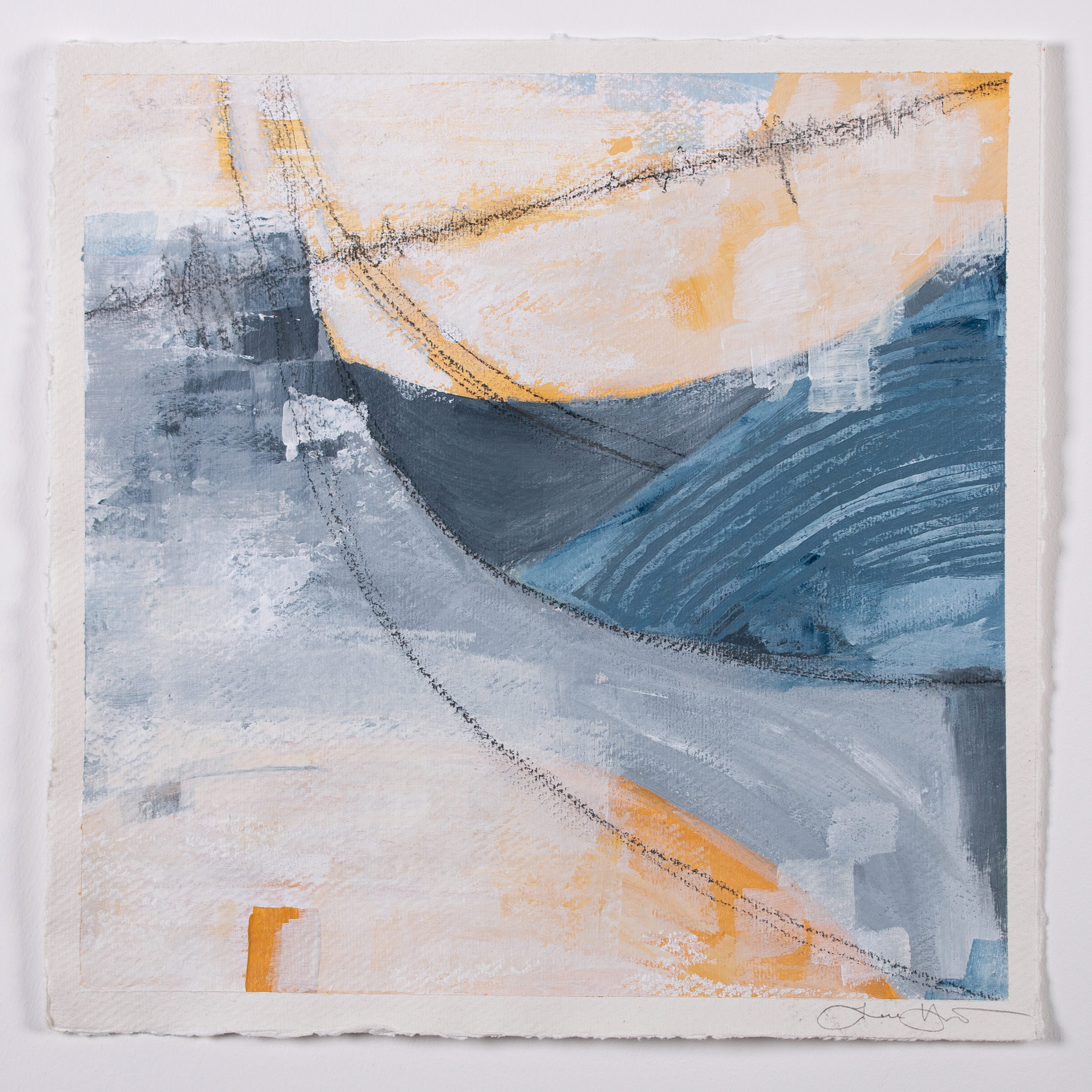In early 2017 Ros McKenna from the Tighnabruaich Gallery invited me to explore the Cowal Peninsula, making a new body of work to exhibit in the gallery in the summer of 2018.
Place is central to my work, when travelling through Scotland I often find myself captivated by the landscape; drawn in by interesting geological features, topographical shapes, dramatic mountains, high cliffs or vast wild spaces.However, when Ros approached me about this project I realised I had never really explored the area known as ‘Argyll’s Secret Coast’, in all my reading about geology, studying maps and walking the hills, it was an area I had overlooked. Although, the peninsula does make an appearance in one of my previous works ‘Highland Boundary Blues’ taking inspiration from the geological fault line which formed during the Caledonian Orogeny and defines the boundary of the ‘Highlands’. The Cowal Peninsula lies to the north of the fault line and the landscape here is rugged, dominated by the metamorphic rocks known as the Dalradian and shaped by glaciers.
I guess I’ve overlooked this area due to there being none of the ‘flashy’ geology or mountains I had been drawn to over the previous years. No Munros to summit, no ancient remnants of volcanoes like Skye or Glen Coe and no famous features like the Moine Thrust exposure or ‘island mountains’ of Assynt. Many visitors overlook this peninsula due to, what you might call, ‘topographical difficulties’. Bound by the fjord like channels of Loch Fyne to the west and Loch Long to the east it can feel like a long journey to get there, not somewhere you pass through and perhaps a contributing factor to why it remains a ‘secret’. There was therefore a significantly different approach to the making of this new body of work for me, the connection to the place, the landscape, had not yet been made. There was no immediately obvious spark to lead me down a path of research, and very few publications about the landscape for me to reference. What I did have though was time, time to spend just being there. Travelling from the central belt, taking the ferry from Gourock, you can be in Cowal in less than two hours and feel like you’re a million miles away. I also had the wonderful support of the gallery, Ros has been there at every stage with passion and encouragement, allowing me total freedom in the work I was to produce. I can’t stress enough how important this has been. It can be a high pressure situation making a whole exhibition of work for a gallery, always with the wee voice at the back of your mind reminding you that the gallery needs to sell this work, so to be encouraged to explore new ideas, techniques and produce quite different work was a wonderful experience.
I made several trips to the area and throughout the time I spent there fell quite deeply in love with the blissful quiet that dominates. The hush. These western peninsulas of Cowal can be described as quiet in many ways: it is not highly populated, there are no hoards of tourists and none of the noise pollution we endure in our cities. When I began to look for inspiration in the geology, quiet was a word that came to mind here too. As I said before, no flashy volcanoes or famous unconformities here. What I came to discover though, is that without that immediately obvious spark of inspiration I was compelled to look deeper and spend time contemplating what the landscape had to say. I eventually found an old report, from 1974, which was commissioned to investigate the coastline of Cowal, rates of change, land use, accessibility and conservational value. Again the word quiet was prevalent in the descriptions of the beaches and waters. ‘low energy environments as a result of restricted fetch sectors and of interference by sheltering islands and adjacent coasts. The sea lochs and narrow straits such as the Kyles of Bute are particularly sheltered.’ and so from this, the spark.
I mentioned that this landscape is rugged and in the description of terrain it is; rough, rocky, hilly. However it is also rugged in the sense you might describe a face, not in a harsh or stern way but wrinkled or furrowed by experience. Gently rugged perhaps. There is a calmness and as I sat on the shore it was the hush that spoke most loudly to catch my attention. Sheltered bays and inlets, the gentle sound of the water and wildlife, protected by the undulating hills and neighbouring islands. The long penetrating stretches of water create the feeling of being on an island, the sea so often at your side. The images I have made explore this place from several different perspectives, from macro to micro, and are all shaped by the overwhelming ‘Hush’. My palette of Harris Tweeds, and the soft warm natural qualities of the wool, lend a thickness and texture to this work which I feel echoes the hush; absorbing sounds and reminiscent of grass or moss underfoot absorbing my footsteps as I walked in the landscape. The huge geological forces which resulted in the distinctive shapes and forms in ‘Kyles of Bute, Sheared’, where I took an observation of this iconic view and combined it with the shapes and colours of geological research. Delving into the narrow channels of the kyles expressing their depths and and shallows with layers of cloth and stitches, details studied to this day by sailors seeking shelter in these waters.
In the 1974 report I was instantly drawn to a section which explained, by means of measuring and expressing in diagrammatic form, the exposure of the coastline and its vulnerability to the effects of the wind. In my series of ‘Shelter’ diptychs I have re-made these diagrams, coupling them with a graphic aerial representation of the corresponding bay, communicating how the water shapes it and the surrounding landscape protects it. “Exposure roses were constructed by measuring the slope (in percentage form) from mid-tide level at the centre of the beach to each of the eight main compass directions, and hence by drawing rays proportional to the slope in each direction. Steep slopes, represented by long rays and hence by large roses, imply a large amount of topographical shelter around the beach, while short rays and small roses indicate that there is little shelter.” A noticeable feature of the rock around Cowal is its layered appearance. From the large exposures on the shores to the small pebbles I collected, layers can be seen. This is due to the way this rock was formed, originally deposited as sediment in deep seas and later altered by metamorphism resulting in this sheetlike orientation of the mineral constituents, or schistosity. In my small series of ‘Rock Studies’ I took inspiration from these forms and patterns observed in the rock, appreciating their natural uniformity, complexity and how the environment has shaped them over time.
The depiction of a ‘view’, in the classic landscape sense, is something I had veered away from in my practice until the beginning of this year. A subject I have written about previously and an idea I was given the opportunity to expand on through my piece for The Argyll Collection Exhibition, also hosted by Tighnabruaich Gallery. I have very much enjoyed experimenting with this new way, for me, of communicating and reinterpreting the landscape. I see colours and abstract shapes created by sand, water, rocks and trees and how the light plays on each. I reduce these elements to simplified forms, essential visual information about the landscape. Each shape is hand cut and stitched to form an interlocking combination of shapes, texture and colour.
The outcome of the alternative approach to this body of work has been interesting to me. Rather than taking the area and ‘putting my spin on it’ or simply applying my creative style this new landscape, the place guided me to what the work would be. I allowed myself to be fully immersed in my surroundings, notice and appreciate all the tiny details with all of my senses, without the distraction of the obvious. I am really proud of the work and excited about these new directions it has opened up.













